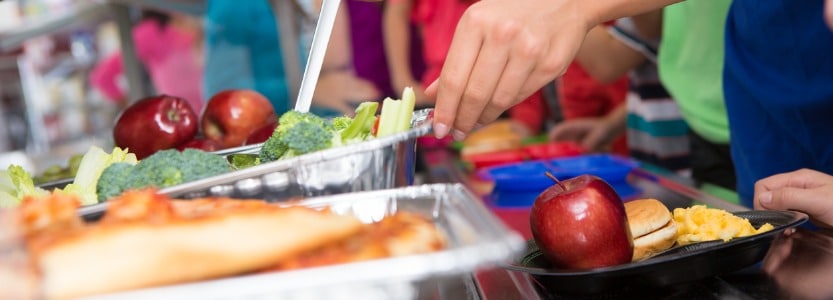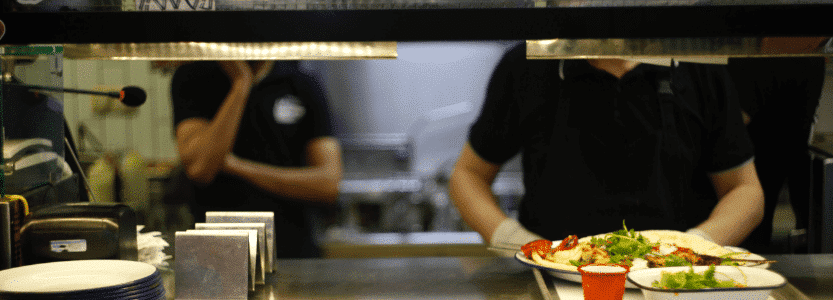BLOGS
Reduce Food Waste in Schools With Cashless Catering
In one school year, schools in England waste over 80,000 tonnes of food. Although this figure is tiny compared to the 15 million tonnes of food waste produced in the UK, it is still a serious issue. Food waste costs, and when food is wasted, energy and money used to produce, transport, store and prepare it is also wasted.
Collecting, treating and disposing of food waste costs money too, as schools have to pay waste collection charges. So the more waste that is produced, the higher the charges schools have to pay, which ultimately affects the school budget and the cost to the pupil for school meals.
The reporting side of a cashless catering system will also allow a school to monitor what sells and what doesn’t. Catering staff can then use this information to identify popular meals and plan menus accordingly.
Food waste is currently costing schools (including colleges) around £250 million a year. Reducing food waste would cut 22 pence off an average school meal, which schools can pass on to parents through cheaper school meals, or keep it as profits to boost the school’s budget. In essence, if a school has 100 pupils on school meals, saving 22 pence a meal equates to over £4,000 in savings for the entire school year.
How much food schools are actually wasting
In its study, WRAP (Waste and Resource Action Programme) published in 2011, during the school year 2007-2008, food waste accounted for half of the waste produced by primary schools and almost a third of waste was produced by secondary schools.
The report also revealed that over 40 weeks, primary schools in England wasted 55,408 tonnes of food and secondary schools wasted 24,974 tonnes.
On average, primary schools waste 75 grams of food per pupil per day, and secondary schools waste 42 grams per student per day. Of the food types served in schools, fruits, vegetables and non-sandwiches were the most wasted, with vegetables making up most of the waste.
In primary schools, 25.3% of food wasted were vegetables, 23.7% were fruits and 16.7 were non-sandwiches, which included pasta, pizza and cottage pies. In secondary schools, 19.2% of food wasted were a mix of sandwiches and non-sandwiches, 18.3% were fruits and 18.1% were vegetables. Disturbingly, over 75% of school food wasted was avoidable.
Getting to the bottom of food waste
For both primary and secondary schools, the kitchen (food prepared but not served) and canteen (food served but not eaten) are the main sources of food waste. Both kitchen and canteen produce around 36% of food waste each. Again, a high proportion of waste produced by both areas were vegetables and mixed meals.
According to the report, major reasons for food waste in the kitchens include absence of an ordering system and the inability to adapt centrally planned menus.
Without a proper ordering system in place, kitchens typically over cater to ensure students have the meal option of their choice. Similarly, a lack of flexibility to adapt centrally planned menus means that kitchens are forced to cook meals that may not be to the liking of many students.
Not allowing pupils in primary schools to have seconds, and limited opportunities for reusing unserved food also contributes to food waste in primary school kitchens. While students buying cheaper snacks and offering less popular meal options, creates more food waste in secondary schools.Major reasons for food waste in the canteen include:
- Big servings with no option for less, so pupils get overwhelmed with food
- Fixed food combinations – for instance, pupils have to have pudding even if they don’t want any, so they end up leaving it
- Pupils at the end of the queue don’t get the meal option they want and end up having food they don’t like
- Pupils don’t know the meal options available
Unpleasant environment, rushed mealtimes, unappealing food, fussy eaters and unfamiliar food are also reasons for food waste in the canteen.
How cashless catering can reduce food waste in schools
Having zero food waste at school is like having a paperless office. It’s impossible. However, it is possible to reduce food waste, and setting up a cashless catering system can go a long way in cutting food wasted in schools.
Cashless catering, such as that offered by FasTrak, allows students to pre-order their food, which automatically informs the catering staff exactly how many portions of each meal they need to prepare for a particular day. This allows the caterer to order more appropriate quantities of food, reducing over catering and ensures that children last on the queue get the meal option they want.
The reporting side of a cashless catering system will also allow a school to monitor what sells and what doesn’t. Catering staff can then use this information to identify popular meals and plan menus accordingly.
This will also help to more accurately estimate the number of portions they need to prepare, as well as the quantity of ingredients required. Introducing a cashless catering system will dramatically reduce over catering, and therefore help reduce food wasted in schools.
Related links & news stories:
The Guardian: Lunch not landfill – how schools can cut food waste and save money












